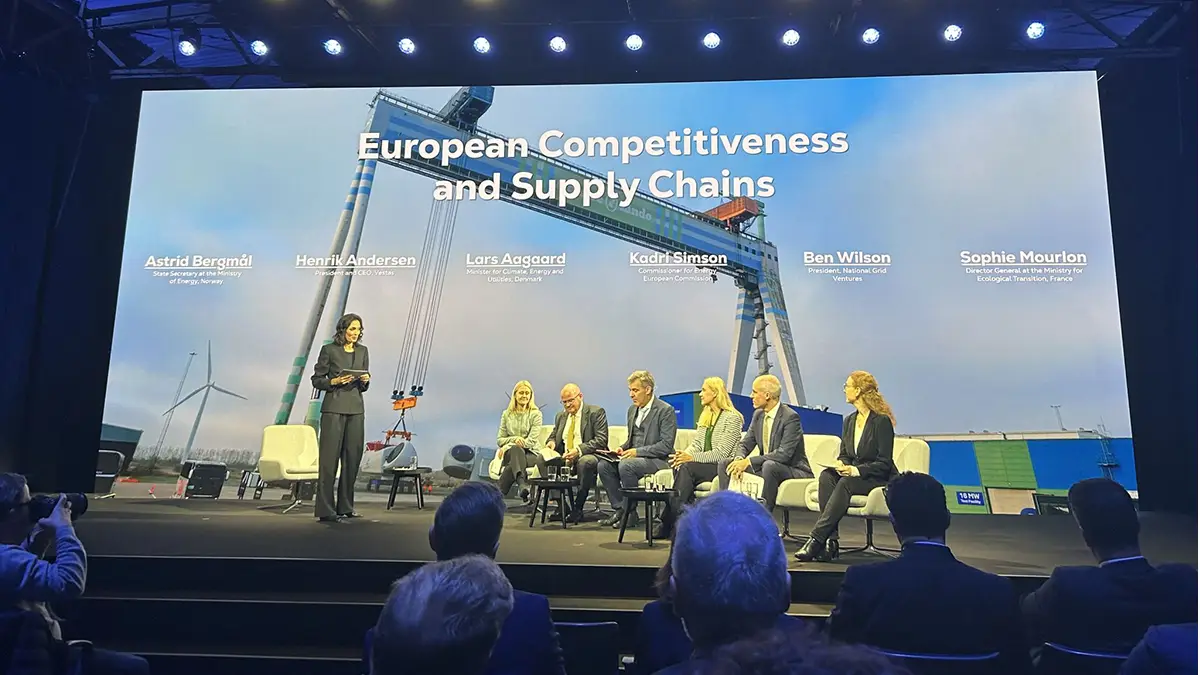The Energy Ministers from the nine North Seas countries gathered for their annual summit in Odense, Denmark, where they underscored a shared vision: transforming the North Seas into “Europe’s green power plant.” During this meeting, the ministers conveyed specific guidance to the newly appointed EU Commission on ways to reinforce Europe’s wind energy infrastructure and urged for action on hybrid offshore wind projects. Key recommendations included the establishment of a cost-sharing model to expedite these projects and the creation of an exclusive financing facility to accelerate offshore developments. Notably, the ministers emphasized the importance of integrating the United Kingdom in all future efforts, recognizing its critical role in achieving the shared renewable energy goals of the region.
The North Seas Energy Cooperation (NSEC) Ministerial Meeting, held in Odense, brought together European and national officials alongside industry leaders to outline the North Seas’ role as a strategic renewable energy hub for Europe. In their joint declaration, representatives from Belgium, Denmark, France, Germany, Ireland, Luxembourg, the Netherlands, and Norway identified six priority areas for cooperation. Among these were goals to increase the competitiveness of Europe’s offshore wind supply chain and to reimagine financing mechanisms for offshore wind projects. These efforts reflect the shared commitment of these nations to scale up offshore wind capacity as a key component of Europe’s green energy transformation.
Critical Need for a Strengthened Offshore Wind Supply Chain
With ambitious targets for offshore wind installations in the North Seas over the coming years, Europe faces a pressing need to reevaluate and expand its approach to wind energy planning. National-level strategies alone will not suffice to support the necessary volume of wind energy infrastructure. This vast undertaking requires coordinated investment across countries to establish and expand manufacturing facilities and other supply chain resources on a basin-wide scale. A robust European supply chain is a fundamental enabler of offshore wind expansion, and recent EU policy support has been encouraging. New pre-qualification criteria are now in place, emphasizing standards in cybersecurity, responsible business practices, and project delivery capabilities, which are legally binding requirements for offshore wind projects.
In alignment with these goals, the NSEC has recommended the development of a “digital transparency tool” designed to enhance visibility across the entire wind energy value chain. This tool would allow stakeholders to view data on auction schedules, production capacities, equipment needs, and port infrastructure capabilities across North Seas countries. The NSEC envisions eventually broadening this tool’s scope to cover all of Europe, including the UK and Norway. This recommendation aligns with a broader call for “more effective and constructive cooperation between the UK and NSEC,” underscoring the importance of cross-border collaboration in advancing shared renewable energy objectives.
Despite this progress, challenges in the supply chain persist. Shortages in offshore wind installation and maintenance vessels, as well as insufficient port infrastructure, present obstacles to the large-scale expansion of offshore wind. Additionally, the lack of grid connections on land and a shortage of skilled workers further highlight the need for urgent action to reinforce the supply chain. Nonetheless, Europe’s offshore wind capacity is growing: by the end of 2025, the continent is projected to manufacture 9.5 GW of offshore wind turbines annually. Major European companies are committing at least €10 billion to construct new manufacturing facilities and upgrade existing ones for components like turbines, foundations, cables, and grid equipment. With sustained access to capital and a regulatory framework that supports a level playing field against global competitors, Europe’s offshore wind supply chain is well-positioned to meet the demands of the green transition.
Innovative Financing Models for Offshore Wind Projects
The European Wind Power Package and the EU Grids Action Plan signal the European Commission’s commitment to facilitating investments in the wind sector and its associated infrastructure. Additionally, the European Investment Bank (EIB) has expanded its support for Europe’s wind industry, providing critical counter-guarantees to bolster investment. However, the NSEC’s recommendations emphasize the need for additional financing solutions, particularly at a regional level, to support hybrid offshore wind farms, energy islands, and interconnected grid systems. These hybrid wind projects are seen as the future of offshore wind in the North Seas, as they link multiple countries and facilitate a shared grid infrastructure.
One of the key recommendations from the NSEC is to establish an “offshore regional facility” to unlock financing at a sea-basin level, thereby supporting the development of interconnected grid infrastructure and hybrid offshore projects. Such a facility could address longstanding challenges related to cost allocation, risk-sharing, and benefit distribution among stakeholders involved in cross-border projects. Swift regulatory action to set a clear cost-sharing framework is essential, particularly for hybrid projects. Getting these pioneering projects underway is now a priority, with the envisioned financing facility playing a central role in removing financial and regulatory obstacles.
The proposed facility would operate on a voluntary cooperation basis, engaging the European Commission, member states, private investors, and potentially non-EU countries interested in supporting offshore projects. WindEurope has expressed strong support for the facility, with CEO Giles Dickson stating, “Well done to the North Seas Energy Ministers for identifying exactly what needs to happen to increase momentum on offshore wind. And for spelling out clearly what the EU needs to do over its new 5-year mandate. Further action to strengthen the supply chain, a big push on grid build-out especially for the cross-border ‘hybrid’ projects backed up by a dedicated offshore financing facility. And the full involvement of the UK in all of this.”
Background on the North Seas Energy Cooperation
The North Seas Energy Cooperation is an intergovernmental forum established to support the development of offshore grids and renewable energy in the North Seas, including the Irish and Celtic Seas. The forum includes Belgium, Denmark, France, Germany, Ireland, Luxembourg, the Netherlands, Norway, Sweden, and the European Commission. The United Kingdom, once a member, exited the NSEC in 2020 following Brexit. However, recent discussions reflect a renewed interest in involving the UK fully in efforts to establish the North Seas as a central hub for Europe’s renewable energy transition.



